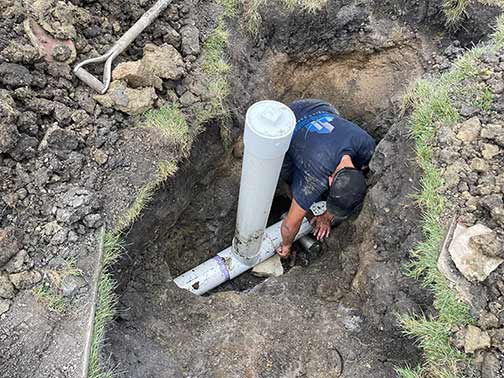
Sewer line excavation is a process for assessing, repairing, and replacing severely damaged sewer lines. It involves digging a trench in the yard to remove the damaged pipes for either repair or replacement. Sewer line excavation is an invasive sewer line repair method.
In most cases, it is done when less-invasive methods of sewer line repair, such as pipe relining, are not possible. Due to the amount of work involved when excavating a sewer line and the risk of damage to utility lines, Vacation Los Cabos notes that this process requires careful planning.
In this post, we outline the steps involved in sewer line excavation and the things you should know when planning to do sewer line excavation in your home.
When is sewer line excavation necessary?
For most sewer line problems in your home, you can fix them with non-invasive methods, which do not require excavation. Sewer line excavation only becomes necessary if problems in the sewer line cannot be resolved using other methods. Sewer line excavation is required in the following situations:
- Collapsed sewer line
It is hard, if not impossible, to repair a collapsed sewer line without digging it. If your sewer line is fractured, collapsed, or misaligned, you need sewer line excavation to solve the issue.
- Severe sewer line clogs and blockages
If a sewer line is so badly blocked that it cannot be cleaned using standard drain-cleaning methods such as sewer rodding and hydrojetting, your only option may be to excavate the line.
- Installing a new sewer line
To install a new sewer line for new construction or replace an existing sewer line or parts of it (because of widespread damage or outdated sewer line materials), you need sewer line excavation.
The process of sewer line excavation
- Initial Assessment
To assess the level of damage to the line, determine the location of the damaged sections, and obtain details about the depth and type of pipe, a sewer camera inspection is done. This step also helps in selecting the best repair method.
- Utility marking and permits
Local permits must be obtained before work commences. After permits are issued and before digging commences, the location of all underground utilities is marked to prevent accidental damage during excavation.
- Trench digging
Using heavy equipment, like excavators, a trench is dug to the precise depth and location of the damaged pipe. If there is a risk of soil collapse, to protect workers, shoring methods are used to secure the sides of the trench.
- Repair and replacement
Plumbers perform the needed repairs of the damaged sewer line section, usually made of more durable materials. Proper slope must be maintained when installing the new line to ensure smooth drainage.
- Backfilling and restoration
When repairs are completed, the new line is tested before backfilling. Each layer of soil returned to the trench is carefully compacted to prevent future settlement. The area is then restored as much as possible.
Getting ready for sewer line excavation
The following must be done or kept in mind when planning for sewer line excavation:
- Prepare your yard by removing lawn decorations and valuable items to avoid potential damage to them. Ornamental stones and similar objects may also interfere with excavation equipment.
- If the excavation involves indoor work, you may need to remove your belongings from the work area to protect them from dust and other risks.
- Get detailed information on the work schedule to let you plan for expected disruptions to your family’s routine. When planning, remember to factor in possible delays.
- Inform your neighbors if you share a fence, and you will need to remove it. It is always a good idea to inform neighbors of potential noise disturbance.
- Heavy machines driving over your yard will damage your landscaping. Find ways to minimize the potential damage and plan for landscaping repairs after the excavation.
- Expect a large mound to form on your lawn after work. This is normal. Do not try to level the surface by removing the soil. Allow it to settle naturally (takes 6-9 months).
- Expect to remove sections of your fence if the sewer line is located near a fence. Most times, you can’t replace the fence until after the mound is fully settled.
- Find out if the company doing the excavation also offers yard restoration (leveling the mound and seeding the area). If they don’t, you have to make additional plans.
- Expect long-term yard restoration; it will take months for your yard to regain its former appearance, and it may not be possible to restore certain features of your landscaping, such as trees and mature plants.
Sewer line excavation is an essential process for restoring the function and health of your drainage system. It is also one of the most expensive sewer line interventions you can do in your home.
That’s why you want to use a company with experience and the right equipment. The company you hire for this work is the most essential factor in the long-term project outcome.

